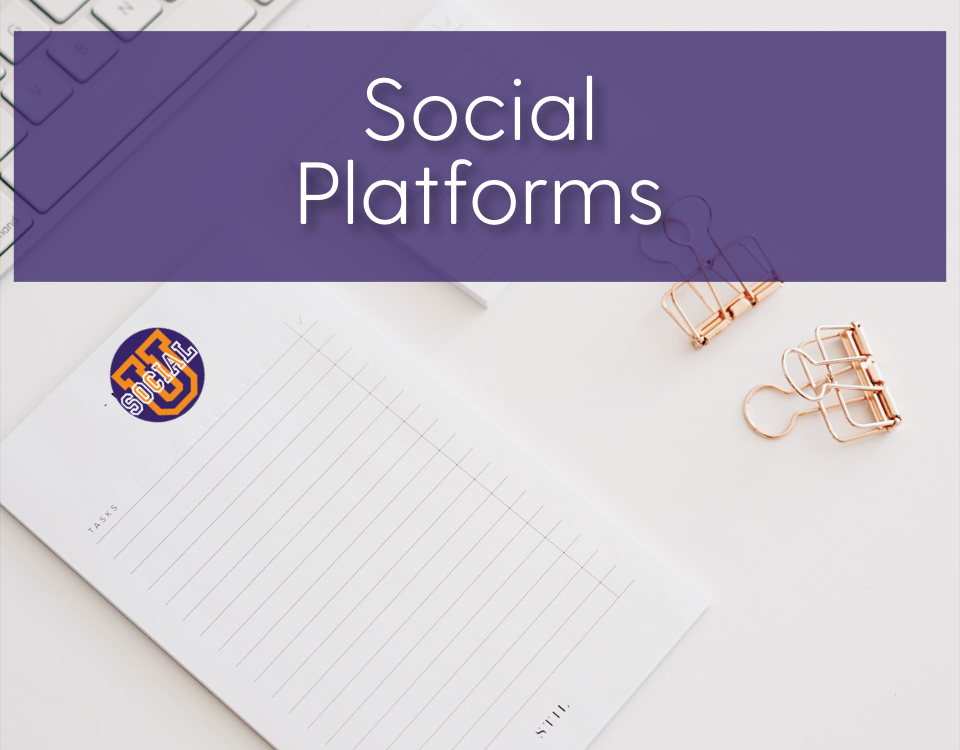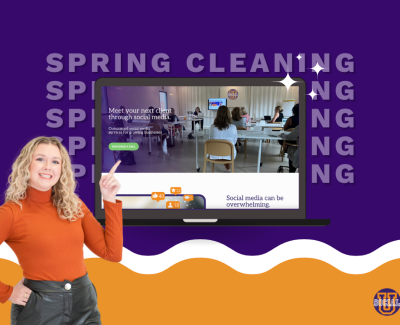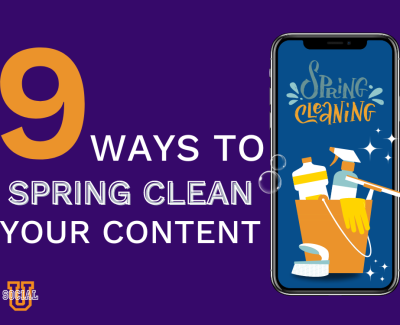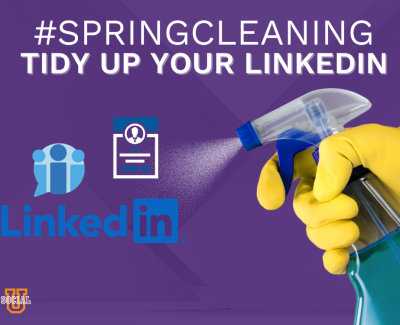For this week’s #TechTuesday, we’re covering one of my most frequently asked questions:
What social media platform should I be on? How many should I be on? How often should I use them?
There are five things you want to take into consideration before you choose where you need to be.
Know Your Target Audience
When I ask questions about who’s your target audience, I get this answer a lot: everyone! Nope, that’s not correct. You have a very specific group of people who are interested in you and your services, and you need to really focus on those folks. If you don’t know who your best client is, you won’t know where to find them. You need to make sure you’ve narrowed down your target audience before you decide which way to go with social media and marketing.
Know Your Objective
What is your overall goal? What are you trying to accomplish? What do you want to get out of social media?
Are you trying to generate leads? Are you trying to get information from your current audience? Is it top-of-mind awareness? Do you want to grow your email list? Are you trying to make sales? What is your overall, no. 1 objective for social media? This answer will help you choose your platform.
Know Yourself
Just as crucial as knowing your ideal client and your overall goals, it’s important to know your own preferences and your own strengths. What works for you? What are you comfortable with? What are you uncomfortable with?
If you’re not a writer, blogging is a terrible choice for you. It will only be a constant obstacle and source of frustration for you if writing isn’t something you can readily embrace. If you’re not a video person, if you don’t want to be on video, YouTube isn’t a good choice for you. You need to make sure you know what you’re capable of before you make those final decisions on where you want to go.

Know Your Competition
You need to understand your competition and know where they are on social media so you can compete with them better. You need to understand where your competition is and how it’s working for them. This is super effective.
With a new client recently, they were wondering where they needed to be online. So we took a deep dive into local competition and created this matrix where we could see at a glance that all of this client’s competitors were on this one platform. So it wasn’t difficult to say, “Well, you really need to be there because that’s where your competition is.”
Know the Platform
It is very important for you to understand who is on which platform so you’ll know where you need to go to find your best audience.
We have to start with Facebook; this is the big one. Facebook has the largest amount of monthly users at 2.38 billion. The whole world is on Facebook. Your mom, your grandmother, your kid, they’re all on Facebook. Facebook is pushing community; it’s all about connecting and communication, so it’s a great platform to build a fanbase. People who want to interact with you, people who want to know more about your company, for you to get information and to develop really great brand ambassadors – Facebook is a good place for that. I don’t think I’ve ever told a company they didn’t need a Facebook page. It’s the best platform to be on. Simply because, aside from the fact that it’s awesome, Facebook Ads make it almost impossible not to have a Facebook page.
500 million tweets a day – that’s huge. While Twitter does have a user base of people over age 55, their largest base is millennials. Twitter is a great resource for news, and it’s great for listening. If you want to know what’s going on, Twitter is the place to go. Which means it’s a great place for creating awareness. If you want to gain or give more information about what you’re doing, Twitter is the place to be.
Pinterest has 250 million active users per month; 83 percent are women. Most of those women are between 25 and 55 years old. Pinterest stats are saying higher income and higher educated audiences are more likely to be on the platform – and they’re likely to spend two times as much money as users on Facebook. Pinterest is great for sales and traffic. If you’re trying to generate more traffic to your website, Pinterest is the place to be. You could have just a couple hundred followers on Pinterest and still average at 20,000 monthly views. It’s absolutely incredible for referral traffic. Pinterest tends to get ignored, but it’s a great platform.
YouTube
YouTube has 1.9 billion monthly active users and is the second largest search engine in the world. Stats say 96 percent of 18- to 24-year-olds use it. It reaches more 18- to 34-year-old households than any TV network. So if you have a younger audience, YouTube is a must. Especially for any kind of how-to. It is the most-searched place for how to do any given thing; 70 percent of millennials use it to search how to change a tire, cook an egg, make reservations, it’s all on YouTube.
LinkedIn has 294 million monthly active users with it’s largest audience between the ages 30-49. It’s mostly used for business, though you’ll still get some personal interaction and light humor. It’s huge for job searching, which is great because 50 percent of users have a college degree and 45 percent of upper management are on LinkedIn. If you’re trying to connect with a CEO, VP, human resources, LinkedIn is the place to go – especially if those people are over the age of 30.
Instagram has 1 billion monthly users, with 71 percent of those being under the age of 35. It is the fastest-growing network, so it’s great for lead generation. It has super high user engagement – higher than Twitter or Facebook. Even better than high engagement for Instagram posts is high engagement for Instagram stories. It’s tremendous.
These stats are how you learn who you best audience is and where to find them. That’s how you decide what platforms you need to be on. Choose one and get really good at that one before you pick a second one. Otherwise you’ll end up getting overwhelmed and shut down, and you don’t want to look like you’re lazy or out of touch. You want to be involved and connected. If it takes you 60 days to get really good at it, that’s totally OK. Instagram will still be there when you’re ready to deal with it.
To recap: You can’t go wrong with Facebook. Even if it’s just for Facebook Ads and their focus on community, you need to have a Facebook page. Twitter is great for connecting with younger audiences, spreading awareness and learning about what’s going on. Pinterest, again, is 83 percent female. These are women who are educated, have money and are ready to spend it. YouTube has more than 1 billion monthly users, is the second largest search engine and is the single easiest way to reach millennials. YouTube and Instagram go hand in hand. LinkedIn is uniquely work-related with a mostly older audience of professionals. Instagram is huge for audience engagement and is growing in every demographic, but is still largest for those under the age of 35.
Social media can be overwhelming if you take it all on at once. No matter which platform you choose to take on first, make sure you do it in a way that’s easy to consume and maintain. Knowing who is where and what your own strengths are will help you succeed on social media.



0 Comments